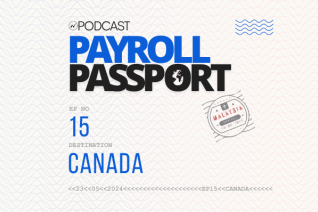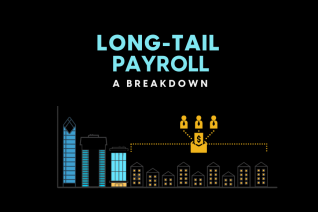Establish your presence globally with Neeyamo as we help you go beyond borders to manage your international payroll and hire new talent in Canada.
Overview
Canada is the largest country located in the continent of North America. Canada shares land borders with one single country – the United States of America. It, however, also shares maritime boundaries with Greenland (Denmark) and Saint Pierre and Miquelon (France). The prominent industries in the country are Real Estate, Mining, and Manufacturing.
Neeyamo – a global payroll provider, provides assistance for onboarding and management of employees in Canada along with the processing of a firm's payroll, compliance, benefits, and more.
Our Presence
Tools And Instances
Facts And Stats
Capital
Ottawa
Currency
Canadian Dollar
Official Language
English, French
Fiscal Year
1 January - 31 December
Date Format
YYYY/MM/DD
Country Calling Code
+1
Other Languages
Mandarin, Cantonese, Punjabi
Time Zone
Pacific Time Zone (UTC-08:00), Mountain Time Zone (UTC-07:00), Central Time Zone (UTC-06:00), Eastern Time Zone (UTC-05:00), Atlantic Time Zone (UTC-04:00), Newfoundland Time Zone (UTC-03:30)
Global Payroll
Overview
Handling the global payroll operations for a widespread workforce can pose a significant challenge for any organization, and the added complication of compliance can make things worse. If companies spend more time processing payroll, it directly impacts day-to-day operations and their overall productivity. The solution to this is – Payroll Outsourcing.
Over the years, Neeyamo has observed these complexities and strived to provide a global payroll solution through a single technology platform - Neeyamo Payroll. Neeyamo eases the global payroll process for companies looking for solutions.
Payroll Taxes
Payroll tax is the percentage amount retained from an employee's salary and paid to the government to invest in the general population's welfare. These are statutory in nature and are levied from both the employer and employee. Additional statutory contributions are made by employers towards aiding both short-term and long-term benefits for their employees. Neeyamo aids you in completing all your payroll and tax accounting needs.
Employee Taxes
- Canada Pension Plan: 5.7%
- Employment Insurance: 1.58%
- Quebec Parental Insurance Plan: 0.692 %
The range of Annual Income (Canadian Dollars) is as follows:
| Up to C$ 50,197 | 15% |
| More than C$ 50,197 and up to C$ 100,392 | 20.5% |
| More than C$ 100,392 and up to C$ 155,625 | 26% |
| More than C$ 155,625 and up to C$ 221,708 | 29.% |
| More than C$ 221,708 | 33% |
CIPP Contribution Rates and Limits for 2025
- Year’s Maximum Pensionable Earnings (YMPE): $71,300 (increased from $68,500 in 2024).
- Basic Exemption: Remains unchanged at $3,500.
- Contribution Rates: Employee and Employer: 5.95%, with a maximum contribution of $4,034.10 each (up from $3,867.50 in 2024).
- Self-employed: 11.90%, with a maximum contribution of $8,068.20 (up from $7,735.00 in 2024).
CPP2 Contributions (applicable to earnings between YMPE and YAMPE):
- Year’s Additional Maximum Pensionable Earnings (YAMPE): $81,200 (up from $73,200 in 2024).
- Pensionable Earnings Range: Only earnings between $71,300 and $81,200 are subject to CPP2 contributions.
Contribution Rates:
- Employee and Employer: 5.95%, with a maximum contribution of $4,034.10 each (up from $3,867.50 in 2024).
- Self-Employed: 11.90%, with a maximum contribution of $8,068.20 (up from $7,735.00 in 2024).
Employer Taxes
- Canada Pension Plan: 5.7%
- Employment Insurance: 1.4 times employee premium
- Quebec Parental Insurance Plan: 0.494%
From January 1, 2024:
- Canada Pension Plan :4% for both Employers and Employee
- Maximum insurable earnings for Employment Insurance (EI) contributions: C$63,200 in 2024.
- Canada Maximum Pensionable Earnings (YMPE) : 68,500.00
Quebec Parental Insurance Plan :
- Employee: 1.32 %
- Employer: 1.85%
Quebec Maximum Pensionable:
- Earnings (YMPE): 68,500.00
CPP Contribution Rates and Limits for 2025:
- Year’s Maximum Pensionable Earnings (YMPE): $71,300 (increased from $68,500 in 2024).
- Basic Exemption: Remains unchanged at $3,500.
- Contribution Rates: Employee and Employer: 5.95%, with a maximum contribution of $4,034.10 each (up from $3,867.50 in 2024).
- Self-Employed: 11.90%, with a maximum contribution of $8,068.20 (up from $7,735.00 in 2024).
CPP2 Contributions (applicable to earnings between YMPE and YAMPE):
- Year’s Additional Maximum Pensionable Earnings (YAMPE): $81,200 (up from $73,200 in 2024).
- Pensionable Earnings Range: Only earnings between $71,300 and $81,200 are subject to CPP2 contributions.
Contribution Rates:
- Employee and Employer CPP2: 4.00%, with a maximum contribution of $396.00 each (up from $188.00 in 2024).
- Self-Employed CPP2: 8.00%, with a maximum contribution of $792.00 (up from $376.00 in 2024).
Payroll Cycle
Overview
Undoubtedly, payroll is a critical process for any organization. The pay cycle in Canada refers to the period for which an organization pays its employees, and this can vary depending on the pay frequency that the organization chooses to adopt. Neeyamo’s global payroll process makes calculating your payroll week more efficient than ever.
Frequency
Employees who work on a monthly basis are paid monthly. You should receive your first pay within 4 weeks of starting work.
For example, if your start date is January 14, 2019, you are entitled to your first pay on February 6, 2019 (for the 8 days you worked in the January 10 – 23 pay period). You will receive your first full pay on February 20, 2019, and payments will continue every second Wednesday after that.
New or returning employees who do not get paid on time can request an emergency salary advance.
13th Month Cycle
There is no provision in law for 13th salary in Canada
Global Work
Overview
An Employer of Record services (EOR) provider helps you eliminate the hassle of handling complexities while onboarding a new employee in an international location. They help bridge the gap that otherwise mandates organizations to have a local registered entity and a local bank account, prior to making a job offer to an international hire.
An Employer of Record services (EOR) provider acts as a legal employer, facilitates salary payments, and manages other statutory requirements such as health insurance, payroll taxes, and employee benefits ensuring compliance with local tax laws and regulations.
This allows organizations to focus on collaborating with the employee in Canada for operational tasks, with the knowledge that they have a cost-effective solution like Neeyamo to support their employer of record, payroll services, and HR requirements, as they continue their global expansion.
HR Mandates and Practices
Minimum Wage
Effective April 1, 2024 the Federal Minimum Wage in Canada will be $17.30 per hour.
Effective October 1, 2024, the minimum hourly wage in Manitoba State is $15.80/hr
Data Retention Policy
While there are many different documents that an employer may be required to store over the course of an employee’s employment.
- Name, social insurance number (SIN), address, and employment commencement date must be kept for three years after the employee’s end.
- Records relating to daily, weekly, and overtime hours worked, pay period, wage rate, overtime pay, gross and net wages, termination pay, deductions, amounts for room or board, vacation pay and time, statutorily protected leaves of absences, and health and safety training must be kept for three years after the information was given to the employee or after the period to which the record relates.
- Books and records relating to payroll — including tax, Canadian Employment Insurance and Canada Pension Plan deductions, as well as evidence of collecting an employee’s SIN and his or her form TD1 — must be stored for a minimum of six years after the filing to which they relate. There are some exceptions to certain types of tax-related documents that may require indefinite storage.
Hiring and Onboarding Requirements
Hiring
As an employer, the Government of Canada has a duty to accommodate to avoid discrimination in the workplace. The duty to accommodate is not about suiting employee preferences; it is about removing barriers related to the 11 prohibited grounds of discrimination, up to the point of undue hardship for the employer, where such barriers result in differential treatment.
Accommodation means adapting work duties and adjusting the work environment so that all employees can participate fully in the workplace. The accommodation also means providing equal access to job opportunities. For example, a person with a disability applying for work with the Government of Canada may request an accommodation during a selection process.
Accommodation is different for each person, and employees should inform the employer of their needs and participate in developing solutions. Accommodation need not be perfect, but it must be reasonable.
All personal information about an employee’s accommodation is protected under the Privacy Act. Such information is shared only as required and with the employee's consent.
Amendments to the Public Service Employment Act reaffirm the importance of a diverse and inclusive workforce and strengthen provisions to address potential bias and barriers in staffing processes.
With these changes:
- All new or revised qualification standards must be evaluated for bias and barriers for members of equity-seeking groups.
- Permanent residents now have the same preference as Canadian Citizens when appointments are made through external advertised hiring processes.
- The design and application of assessment methods must include an evaluation of bias and barriers and reasonable efforts for mitigation.
- The Public Service Commission now has explicit authority to audit for bias and barriers that disadvantage members of equity-seeking groups.
- The Commission and deputy heads will have explicit authority to investigate bias and barriers for members of equity-seeking groups.
Minimum Employment Age
The minimum employment age is 18 years as of June 12, 2023.
Onboarding
Employees must be eligible to work in Canada and are required to have a valid Social Insurance Number. Employees must be registered on the payroll upon receipt of their Social Insurance Number (SIN).
The information required for setting up a new employee is as follows:
- Name
- Date of Birth
- Proof of Citizenship/Legal Status
- Residential Address
- Telephone Number
- SIN Number
- Bank Account Details (Void Cheque/Direct Deposit slip)
- Employee’s employment contract information
- Collective Agreement information (If applicable)
- Employee Tax Details (TD1/TP-1015.3-V forms)
- Benefit/Pension Enrolment or Waiver forms (If applicable)
- Electronic Pay Statement, T4/RL1 Authorization form
- Work Location/Province of Employment
- Employers are required to ensure new employees are aware that they have to complete a TD1
Probation
The probation period for permanent employees is generally a minimum of three months.
Leave
Public Holiday
There are 12 Public Holidays.
- Jan 1: New Year's Day
- Apr 7: Good Friday
- Apr 10: Easter Monday
- May 22: Victoria Day
- July 1: Canada Day
- Aug 7: Civic Holiday
- Sep 4: Labour Day
- Sep 30: National Day for Truth and Reconciliation
- Oct 9: Thanksgiving Day
- Nov 11: Remembrance Day
- Dec 25: Christmas Day
- Dec 26: Boxing Day
Canada's provinces and territories celebrate a number of common general or "statutory" holidays at the national level. However, many of the provinces differ in their designation of other holidays as they relate to the individual region.
Sick Leave
In Canada, there are no legally mandated government-driven sick pay benefits. The Employment Standards Amendment Act gained royal assent on May 20, 2021. The newly passed legislation immediately grants British Columbia employees up to three paid sick days related to COVID-19, and from January 1, 2022, it has granted employees an undetermined amount of paid illness and injury leave (in addition to existing unpaid illness and injury leave) for those who have worked at least 90 days in a row.
Maternity Leave
Employees who are pregnant have the option to take a maternity leave of up to 17 weeks without pay. The leave might be prolonged in specific circumstances. Employers are not required to provide salaries to employees on maternity leave, although they can make claims through employment insurance. In the event of a stillbirth or miscarriage, an employee may take up to 12 weeks of unpaid leave.
Paternity Leave
When a child is born, new parents have the option to take unpaid parental leave from work. Birth moms who took maternity leave are eligible for up to 35 weeks of leave. All new parents, even birth moms who don't take pregnancy leave, are eligible for up to 37 weeks of parental leave. A birth mother may take both pregnancy and parental leave since paternal leave is not included in the leave associated with pregnancy.
Parental Leave
An employee is entitled to unpaid leave up to 63 weeks of unpaid leave to care for a newborn child of the employee or a child who is in the care of the employee for the purpose of adoption. Parents may share parental leave in order to access an additional 8 weeks of leave. Parents who share parental leave have access to 71 weeks of parental leave. They can take this leave any time during:
- the 78-week period starting the day the child is born, or
- The day the child comes into their care. Female employees who have given birth can take both maternity and parental leave.
However, they are only eligible for 1 period of time for each type of leave. If they choose to take parental leave, they must do so in 1 continuous period of time without interruption from periods of work. The combined maternity and parental leaves for one parent cannot exceed 78 weeks. Parents who share parental leave have access to a combined 86 weeks of maternity and parental leave. Employees can only share parental leave.
Personal Leave
An employee is entitled to leave up to 5 days of leave in every calendar year for:
- treating their illness or injury
- carrying out responsibilities related to the health or care of any of their family members
- carrying out responsibilities related to the education of any of their family members who are under 18 years of age
- addressing any urgent matter concerning themselves or their family members
- attending their citizenship ceremony
- any other reason prescribed by regulation
An employee who has been in continuous employment for 3 consecutive months with the employer is entitled to 3 days of leave with pay at the rate of wages for their normal hours of work.
Bereavement Leave
- Specifically in Manitoba, employees are now eligible for five days of unpaid leave for the death of a family member.
- An employee may now take up to five days of unpaid leave if they or their spouse or common law partner experiences the loss of a pregnancy.
Other Leave
There are additional leaves covering:
- Compassionate Care Leave –Provincial regulation of approx. 8 weeks
- Personal Emergency Leave–up to 10 days per year
- Domestic Violence and Sexual Assault Leave–up to 5 days
- Critical Illness Leave–up to 37 weeks
- Child Death Leave and Crime related: Child Disappearance Leave –up to 104 weeks
- Family Medical Leave–up to 28 weeks.
Termination
Overview
Employers are required to process terminations through the system, follow instructions regarding adjustments and final payments, produce and distribute Record of Employment (ROE) documents, and report terminations to the appropriate authorities.
Notice period
Federally regulated employees do not have to give their employer notice if they choose to quit. However, if the employer chooses to terminate a position, they must either:
- provide the employee with at least 2 weeks' written notice
- in lieu of such notice, pay the employee 2 weeks' regular wages
Starting 1 Feb 2024, the graduated notice periods are as follows:
- Two weeks: Employees with at least three consecutive months of employment.
- Three weeks: Employees with at least three consecutive years of employment.
- Four weeks: Employees with at least four consecutive years of employment.
- Maximum: 8 weeks' notice.
Upon termination, employers must provide a statement outlining vacation benefits, wages, severance pay, and any other applicable benefits or pay associated with the employee's termination.
(The new termination rules do not apply to terminations for just cause or as part of a group termination with the group termination notice.)
Temporary layoff
A layoff is considered a termination of employment when the employer has no intention of recalling the employee to work. In these cases, employers have responsibilities and obligations to the employees usually associated with the termination of employment, and employees benefit from such defined rights as protection from unjust dismissal.
Group termination
A group termination of employment is the termination of employment of 50 or more employees working at a single industrial establishment either on the same date or within any 4-week period.
In such cases, employers must notify the Head of Compliance and Enforcement in writing of their planned group termination of employment at least 16 weeks before the employment terminations begin.
Employers are also required to give notice of individual termination or pay in lieu of notice, as well as the group termination of employment notice to each individual employee identified as part of the group affected.
Unjust dismissal
Part III of the Canada Labour Code protects federally regulated employees, excluding managers, who have completed at least 12 months of continuous employment with the same employer and who are not covered by a collective agreement from unjust dismissal. Unjust dismissal may also include cases of "constructive dismissal" where the employer:
- has not directly fired an employee, but has failed to comply with the contract of employment in some major respect
- has unilaterally and substantially changed the terms of employment
- has expressed an intention to do either of these
Severance Pay
An employee has the right to collect severance pay if they have completed at least 12 consecutive months of continuous employment before their layoff or dismissal resulted in a termination of employment.
They are entitled to 2 days' regular wages for each full year that they worked for the employer before their termination of employment. The minimum benefit is 5 days' wages.
Visa
Overview
Foreign skilled employees need a temporary job offer from a Canadian business in addition to a Temporary Work Permit issued by Employment and Social Development Canada in order to work temporarily in Canada (ESDC).
In order to enter Canada, a Temporary Resident Visa (TRV) may also be required, depending on the nationality of the foreign worker. Note: The laws and procedures governing temporary work permits are unique to the province of Quebec.
Applying for a work permit: Candidates can apply for a Canadian temporary work permit after obtaining the job offer letter and positive LMIA. This may include meeting with a visa officer who will determine if the employment adversely affects jobs for Canadians. If the person qualifies for the position, they will get a Canadian work permit. Most foreign nationals need a work permit to work in Canada.
There are 2 types of work permits.
Employer-specific work permit
An employer-specific work permit lets you work in Canada according to the conditions on your work permit, such as:
- the name of the specific employer you can work for
- how long you can work
- the location where you can work (if applicable)
- Before you apply for an employer-specific work permit, your employer must give you
- a copy of your employment contract
- 1 of the following:
- a copy of a labor market impact assessment (LMIA)
- an offer of employment number (for LMIA-exempt workers)
- To get this number, your employer must use the Employer Portal
- If your employer doesn’t need to use the Employer Portal
- If your employer does not need to use the Employer Portal to submit an offer of employment, they must give you a copy of the employment contract
Open work permit
An open work permit lets you work for any employer in Canada, except for one that is listed as ineligible on the list of employers who have failed to comply with the conditions or regularly offers striptease, erotic dance, escort services, or erotic massages
You can only get an open work permit in specific situations:
- If you want to bring your family with you
- Your spouse or common-law partner and dependent children may be able to work, study or live with you while you work in Canada.
Employee Background Checks
Legal and Background Checks
Employee privacy laws in several countries like Alberta, British Columbia, and Quebec set restrictions on the gathering, using, and disclosing of personal information.
Additionally, it is recommended to take potential employees' permission before running a criminal background check, and in most cases, it is done by the employee who would then disclose it to the employer.
Other types of background checks like social media background checks, may be carried out without the applicant's knowledge but information like the applicant's religion, national origin, sexual orientation, and family situation should not be used in a discriminatory way.
Last updated on February 07, 2025.
If you have any queries or suggestions, reach out to us at irene.jones@neeyamo.com
Have Queries? Get In Touch With Us
Get in touch with one of our experts and take a quick demo of our services












